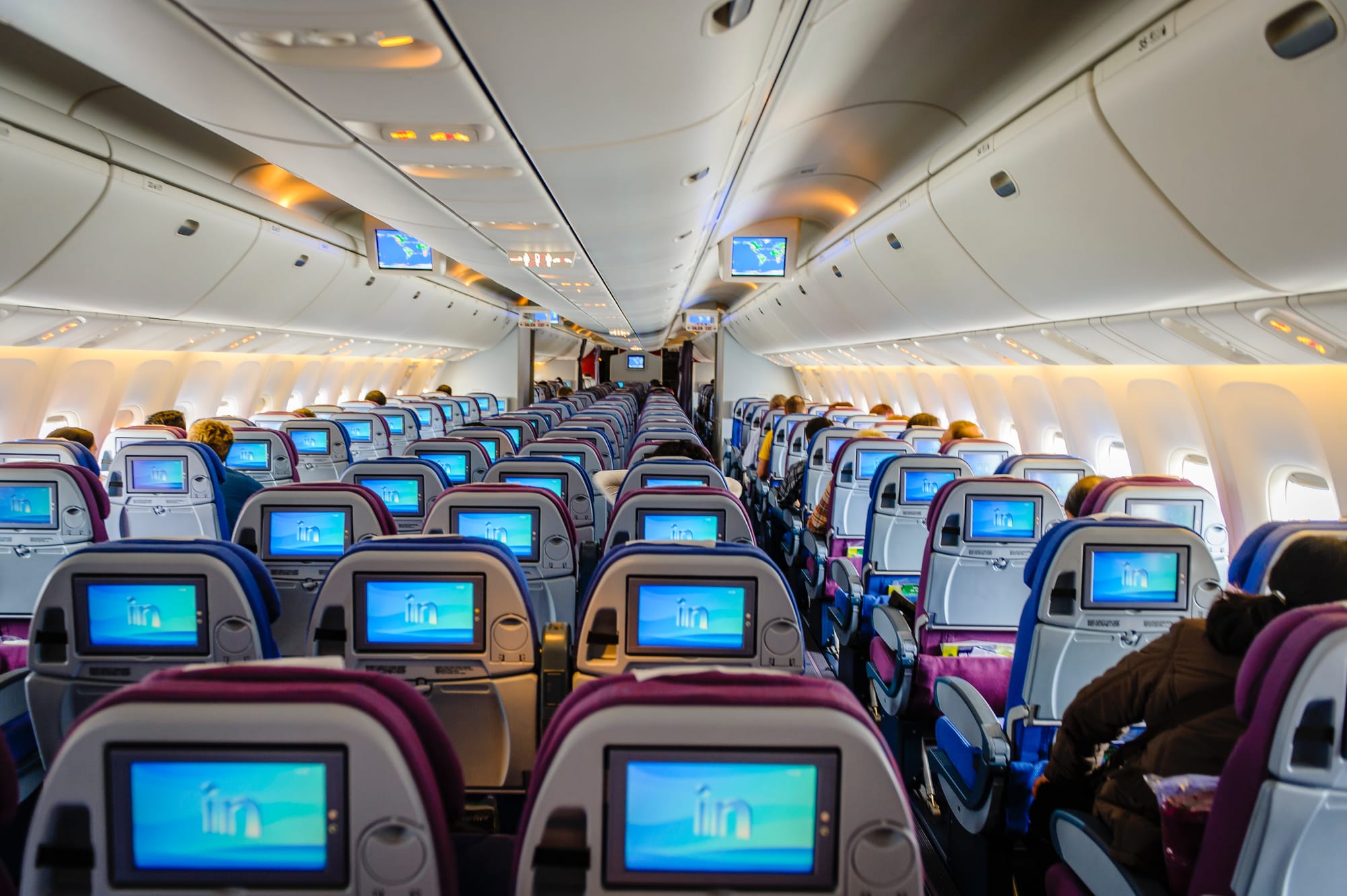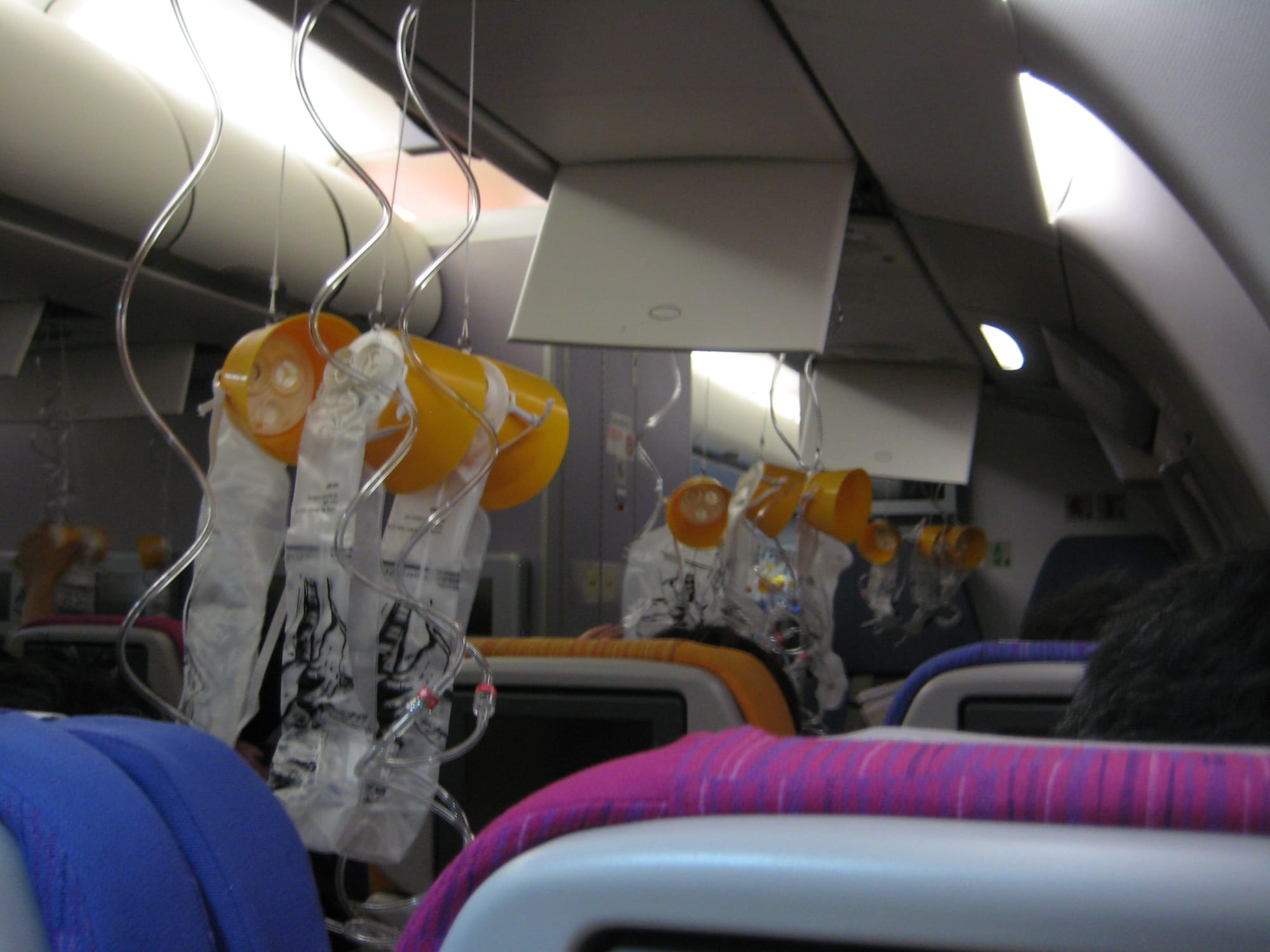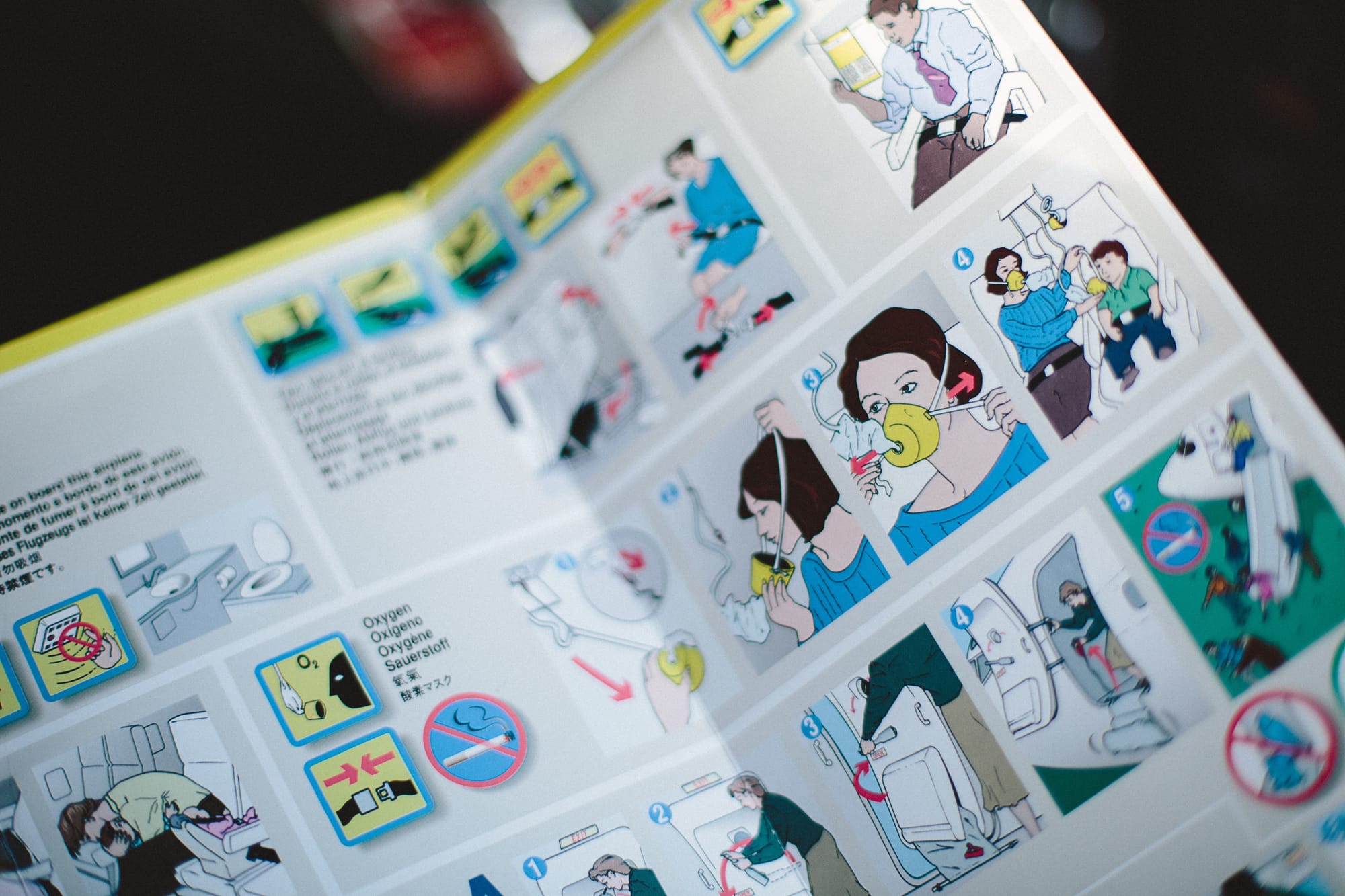What Happens When A Plane Loses Cabin Pressure?

Soaring through the clouds, bathed in sunlight, feels like a world away from earthly worries. But at those lofty heights, an unseen danger lurks: the possibility of rapid decompression. While modern aviation is incredibly safe, understanding what happens in such an event can be both informative and reassuring.
Under Pressure
Imagine breathing effortlessly, then suddenly feeling your ears pop and sinuses throb. That's the first, almost immediate sensation of rapid decompression in an airplane. As an airplane climbs, the surrounding air pressure plummets, mimicking the conditions found at higher altitudes. To ensure passenger comfort and safety, aircraft cabins are pressurized, replicating the air pressure of around 6,000 to 8,000 feet—enough oxygen for normal bodily functions. Think of it as carrying a bit of sea level with you into the sky.

Now, imagine a breach in this pressurized bubble. A door might malfunction, a window crack, or structural damage occur. Suddenly, the cabin pressure mimics the thin air outside, dropping precipitously. It's like diving into an icy pool without warning.
Chaotic Whirlwind
The first sign is a loud roar, like rushing wind, caused by the abrupt pressure change in your ears and sinuses. While temporary discomfort is likely, this is usually harmless. More concerning is the rapid drop in available oxygen. At high altitudes, the air is already scarce in oxygen, and with cabin pressure falling, oxygen deprivation, called hypoxia, can set in within minutes if not addressed. There's also the problem of visibility, with the rapid pressure change the air temporary forms condensation in the cabin and can make it hard to see.
The Body's Response

Early signs of hypoxia include tingling fingers, dizziness, lightheadedness, and impaired coordination. Thinking becomes confused, judgment clouded, and, paradoxically, euphoria may set in, masking the seriousness of the situation. Without intervention, unconsciousness and eventually death can occur within mere minutes at cruising altitude.
This is why modern airplanes are equipped with oxygen mask systems that deploy automatically or manually, supplying pressurized oxygen to buy precious time for descent. Simultaneously, pilots initiate a rapid descent, often called an emergency descent, maneuvering the aircraft to lower altitudes where the air is denser and oxygen readily available. Most commercial aircraft supply only about 12 to 22 minutes of oxygen, just enough to descend to a lower breathable altitude.
Safety First

While rapid decompression is a serious emergency, modern aircraft design, rigorous crew training, and safety protocols significantly reduce the risks. Remember, paying attention to safety briefings, knowing where your oxygen mask is, and acting swiftly when instructed are crucial steps in ensuring your well-being in such an event.
The next time you take to the skies, remember: the air may be thin up there, but the layers of safety built into modern aircraft are thicker still. Fly informed, fly prepared, and fly with confidence, knowing that even in the face of unforeseen challenges, the wings of technology and human skill are there to see you safely through.





